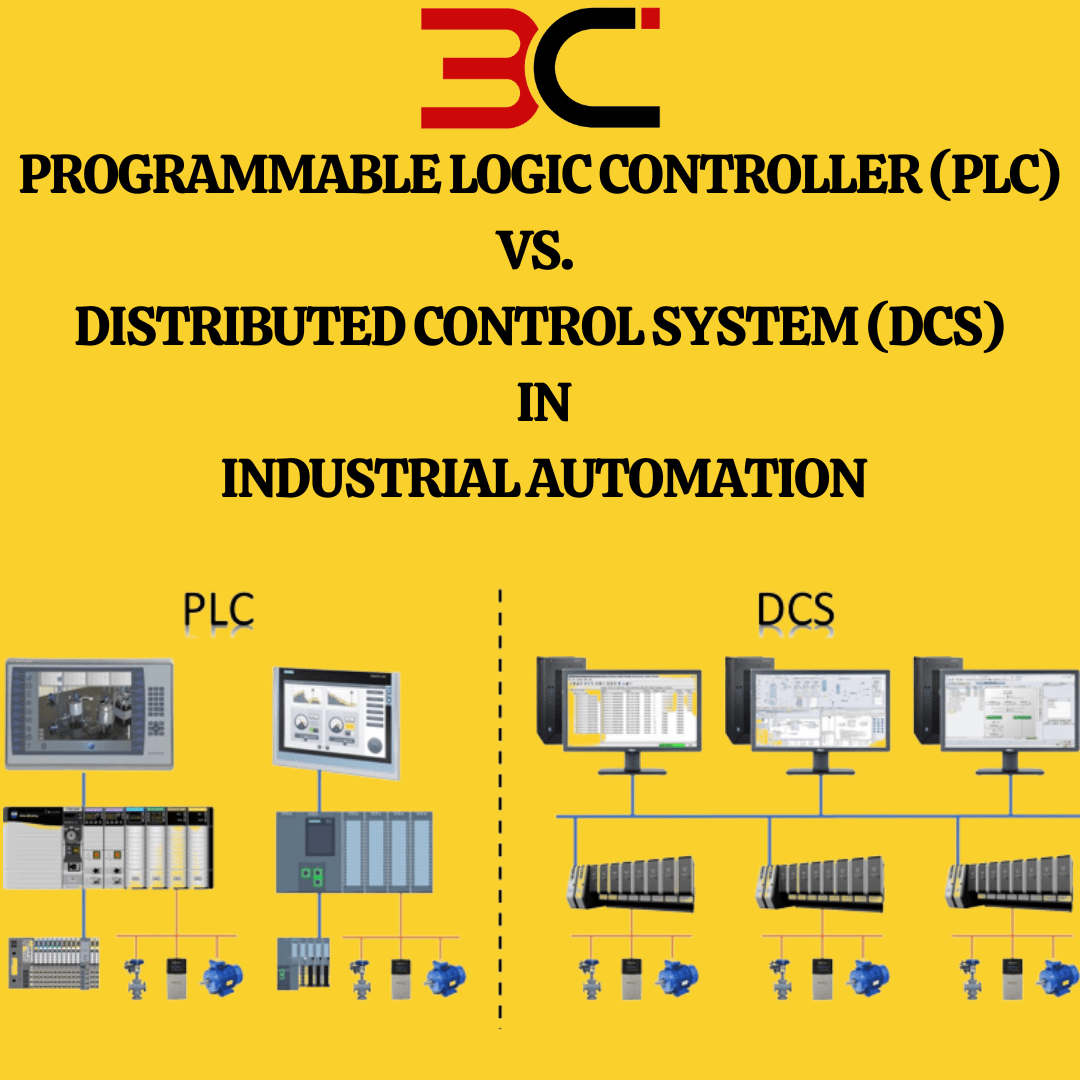Some of the best systems for industrial automation are PLCs and DCSs to control machines or processes. These days, the two have not changed much as a result of technological development. But that does not imply they are not distinct.
PLC is a central controller intended to control machines or processes, which makes it significantly different from DCS. In contrast, a DCS is an overall system that has control provided by a number of scattered controllers rather than a single central controller.
In this post, we will go over the important differences between a Programmable Logic Controller (PLC) and Distributed Control System (DCS) for industrial automation.
What is a Programmable Logic Controller, or PLC?
PLCs are electrical devices built around microprocessors that regulate a variety of operations. The execution of several functions, including sequencing, counting, timing, and logical operations, is a part of process control. Additionally, the PLC needs memory space to hold commands in order to accomplish this.
PLCs are created to control machines or processes in industrial applications. Given that it is pre-programmed, it is utilized to manage certain procedures. As a result, anyone may use it; computer programmers are not necessarily necessary.
What is a Distributed Control System, or DCS?
Systems for regulating processes or plants are defined by DCS. Distributed control systems do this by utilizing a variety of independent controllers dispersed over the network. It includes controllers for process control together with operator consoles, archives, servers, and engineering units.
High-speed network connections make it possible for different controllers to join even if the distributed network lacks general supervision from the central control unit. To meet the requirements of a plant, a DCS includes many Intelligent Electronic Devices (IEDs) that are geographically distributed and configured to work together.
The Major Differences between a Programmable Logic Controller (PLC) and Distributed Control System (DCS) in Industrial Automation
Before we go through the differentiation table, let’s break down some deep acknowledgments of a Programmable Logic Controller (PLC) and Distributed Control System (DCS) so that you may have a clear understanding if you are new to all of these.
- The primary distinction between a PLC and a DCS is that a PLC is a solitary entity intended for process control. On the other hand, DCS is a comprehensive system spread throughout a vast network and intended for overall operation control.
- The reaction time of the distributed control system is around 30 milliseconds, compared to the programmable logic controller’s one-tenth of a second reaction time.
- The two are greatly distinguished from one another by the speed of logic operation. DCS activities are not anticipated to be significantly faster than bulk procedures because PLC is built to execute high-speed operations.
- Electrically powered relays are substituted by PLC, while single loop controllers are substituted by DCS while including numerous control components.
- The Programmable Logic Controllers are created for managing machinery like lathes, where the DCS manages the functioning of that specific machine.
- Conversely, distributed control systems manage the whole procedure much like a power source, where different places are responsible for handling different machine functions.
- PLCs have centralized controllers, which are typically found in RTUs. However, the dispersed network of DCS prevents the presence of a centralized controller. The typical number of I/O ports supported by PLC is fewer than 1000. In contrast to PLC, DCS is regarded to be more scalable since it may handle hundreds of I/O ports.
- In comparison to DCS, PLCs offer less operator accessibility flexibility. However, the more adaptable nature of DCS increases the possibility of vulnerability to unwelcome meddling by various operators, which might result in an erroneous shutdown.
- While a DCS has a collection of built-in control capabilities that may be customized in accordance with its many purposes, PLC programming is oriented upon the application.
- PLCs can be used for certain operations because of the way they are developed. However, DCSs are designed to be used in complicated processes where frequent modifications are necessary.
- Because of their greater scalability, DCS is useful for improving processes and integrating data. On the other hand, PLC helps to complete repeated operations because of its poor scalability reliably.
- Compared to DCS, which offers scan times of 100 to 500 milliseconds, the PLC has a scan time of around 10 milliseconds.
- PLC presents greater troubleshooting challenges than DCS since problems are more obvious in a dispersed network than sophisticated equipment.
- PLC employs very little human engagement, whereas DCS includes substantially more.
- Compared to DCS, PLC architecture is much more straightforward.
Programmable Logic Controller (PLC) vs. Distributed Control System (DCS)
In a nutshell, the following comparison table will present the basic differences between a PLC and DCS –
| Topic | Programmable Logic Controller (PLC) | Distributed Control System (DCS) |
| Architecture | PLCs feature an easy-to-use, adaptable architecture. | Systems using DCS are less adaptable. |
| Year of Invention | 1969 | 1975 |
| Control | A machine. | A plant or system. |
| Controller type | Centralized | Decentralized |
| IO capacity | A PLC has the capacity to manage a dozen IOs. It is capable of managing tens of analog IOs. | Plenty of IOs can be handled by a DCS. It is capable of managing numerous PID functions and analog IOs. |
| Logic development | PLCs can be programmed according to specific applications. | The built-in control features of the DCS must be customized depending on the application. |
| Field of usage | PLC works well in specialized applications with minimal modification. | For complicated processes that need sophisticated process control capabilities, DCS is appropriate. |
| Redundancy | With extra hardware, PLCs can be rendered redundant, which increases their cost relative to DCS. | Distributed control systems come standard with redundancies. |
| Cost of setup | Cheaper than a DCS | Pricier than a PLC |
Final Words
It may be inferred from this that if a single PLC in the system malfunctions, the entire system will shut down. But with a DCS, the existence of several independent controllers allows for other system functions to continue operating as normal. Consequently, even if one of the controllers is malfunctioning, the plant or system is not always harmed.

